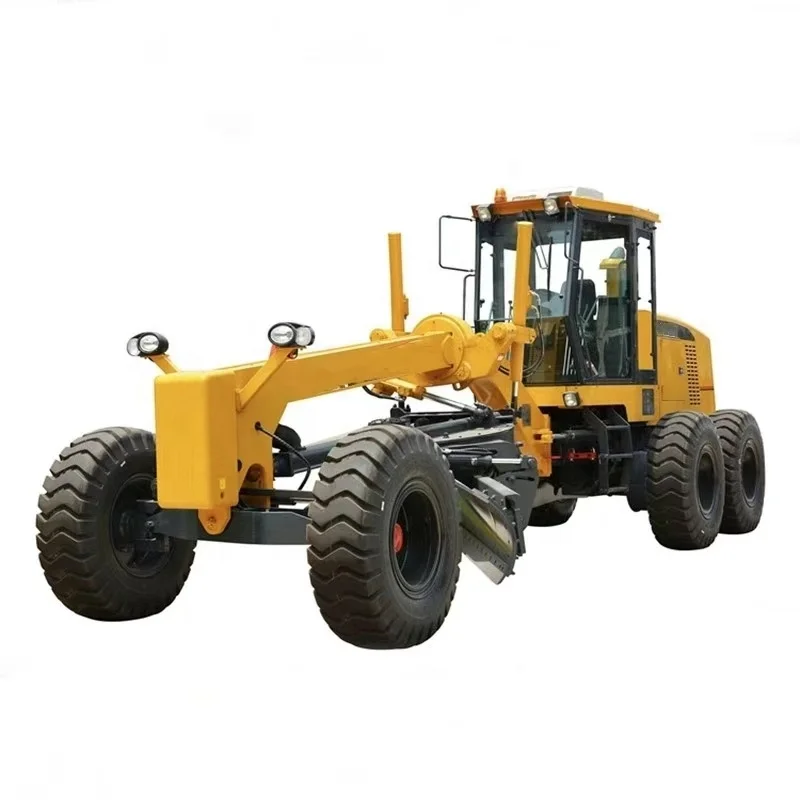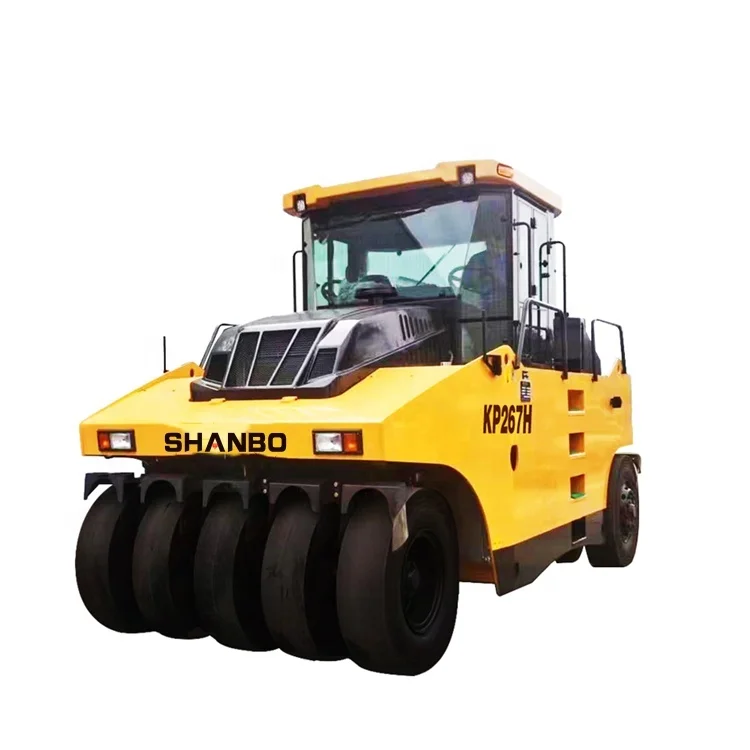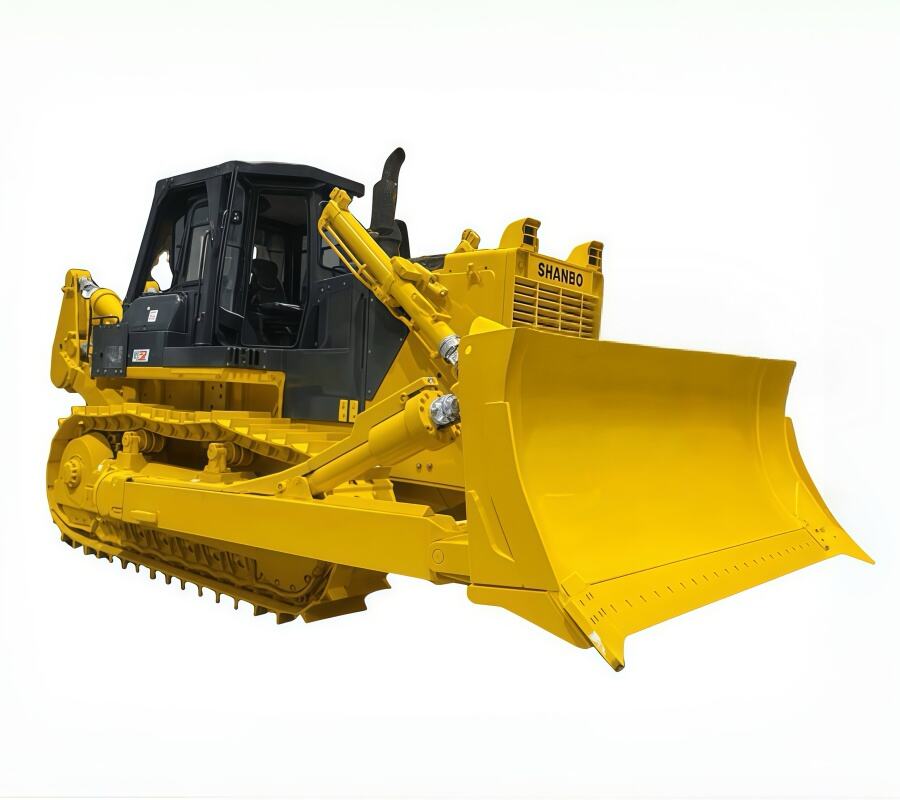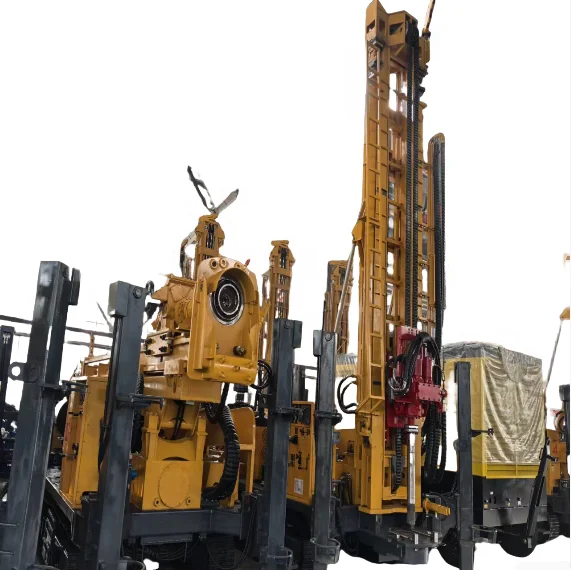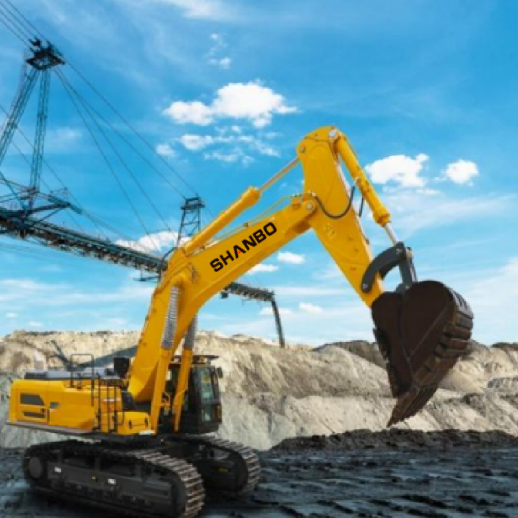How Much Does a Bulldozer Weigh and How Does It Affect Performance
Bulldozer Weight Ranges by Class
Compact Bulldozers (Under 20,000 lbs)
Compact bulldozers, often weighing less than 20,000 pounds, are designed for small-scale construction projects and landscaping tasks. These vehicles excel in environments where space is limited and maneuverability is essential. Due to their lightweight nature, compact bulldozers are ideal for tasks like residential groundskeeping, fine finishing, grading, and working on softer terrain. Their low weight also facilitates easier transport, making them a cost-effective choice for smaller contractors.
These bulldozers typically offer significant advantages due to their manageable weight. They are easier to transport on smaller trailers and more suitable for use in confined spaces, where larger machines would struggle. Compact bulldozers can be equipped with various attachments to optimize their functionality for tasks such as clearing brush or performing intricate grading. Costs for compact models can vary greatly, but they tend to be more affordable compared to larger counterparts.
Popular models in this range include offerings from manufacturers like Shanbo. These machines are known for their durability and versatility. From industry data, the price of a small bulldozer for sale can range significantly depending on capabilities and included features. Generally, the price for compact bulldozers falls within a range that is accessible for small-scale operations.
Medium-Class Dozers (20,000-60,000 lbs)
Medium-class bulldozers play a vital role in general construction, road building, and utility work. Weighing between 20,000 and 60,000 pounds, these dozers strike an excellent balance between power and mobility. This weight class is often chosen for projects needing substantial earthmoving capabilities while maintaining a degree of agility.
The advantages of medium-class bulldozers include an improved power-to-weight ratio, which allows for efficient operation in varied environments. Their design offers a balance that supports both mobility and powerful pushing capability, making them suitable for tasks like land clearing, site preparation, and commercial construction. This weight range is ideal for equipment that needs to be mobile yet potent enough to handle demanding work sites effectively.
There are several well-regarded models in this category, such as the Shanbo 235 hp crawler bulldozer. Prices in this class can vary based on technology, additional features, and brand prestige. Industry benchmarks suggest these dozers are competitively priced within the market, offering substantial value for companies involved in larger-scale developments.
Heavy-Duty Bulldozers (60,000-150,000+ lbs)
Heavy-duty bulldozers are indispensable for large-scale projects like mining operations, oilfields, and major earthmoving initiatives. These machines can weigh anywhere from 60,000 to over 150,000 pounds, providing the power and stability required for the most challenging tasks. The substantial build of these bulldozers ensures they can handle heavy loads and operate continuously in harsh conditions.
The increased weight of heavy-duty dozers contributes to their enhanced durability and stability, crucial factors when dealing with massive topography changes or dense materials. This class of bulldozers boasts high load capacities, allowing operators to tackle extensive areas efficiently. The stability offered by heavy bulldozers is crucial in preventing rollovers and ensuring safe operation on uneven terrain.
Key models in this category include the Shanbo 603 hp crawler bulldozer with bucket and the Komatsu D375, both known for their high performance in grueling work environments. Market trends indicate a significant demand for these models, which are priced according to their advanced capabilities and durability. Customer reviews and expert evaluations frequently highlight the reliability and strength of these machines, confirming their essential role in industrial-grade projects.
Shanbo bulldozers have emerged as a noteworthy player in the bulldozer market. Known for their innovative designs and high power output, Shanbo offers a range of dozers suitable for various weight classes. Their compact models excel in agility, while heavier options are praised for their durability and high performance in rigorous environments. This brand combines cutting-edge technology with robust engineering, making their bulldozers a competitive choice for different project needs.

Key Factors Influencing Bulldozer Weight
Engine Power and Chassis Design
The engine power of a bulldozer significantly influences its weight, with various types of engines used to optimize performance. Bulldozers are usually equipped with diesel engines known for their durability and high torque, essential for heavy-duty work. More powerful engines require more robust components, which can increase the overall weight of the machine, enhancing its stability and functionality.
Chassis design plays a crucial role in how the weight is distributed, impacting the bulldozer's control and stability. A well-engineered chassis ensures optimal balance, allowing for better maneuverability and reduced ground pressure. Innovations in chassis materials and design can support the efficient distribution of weight, facilitating effective control, especially in hydraulic bulldozers where precision is key.
Blade Types and Additional Attachments
Different types of blades, such as straight blades and U-blades, add varying amounts of weight to a bulldozer, affecting both its overall weight and functionality. Straight blades, generally weighing less, are versatile but limited to lighter tasks, whereas U-blades are heavier and designed for moving larger quantities of materials, thereby impacting the bulldozer's overall capabilities.
Attachments such as rippers, winches, and additional counterweights can significantly enhance operational capabilities. These items not only increase the weight but also add to the bulldozer's versatility by enabling it to perform tasks like breaking up hard soil or pulling heavy loads. Thus, the choice of attachments directly correlates with the desired performance and functional demands of the bulldozer equipment.
Counterweights and Stability Features
Counterweights are essential for maintaining the stability of a bulldozer, particularly in larger models. These weights balance the machine, ensuring it remains grounded and stable while handling heavy materials or operating on sloped terrains. They are indispensable for ensuring that bulldozers maintain optimal functionality in various operational settings.
Apart from counterweights, features like wider tracks contribute significantly to stability. Wider tracks distribute the weight more evenly, reducing ground pressure and improving the bulldozer's ability to operate on soft or uneven surfaces. Advanced blade designs or configurations can also enhance stability, allowing for better load management and reduced operational risks, which is crucial for crawler dozers used in demanding environments.
Traction and Ground Pressure Dynamics
The weight of a bulldozer significantly influences traction, especially when navigating through various soil types. Heavy machinery, like bulldozers, utilizes its mass to enhance friction between its tracks and the ground, ensuring better traction. This is crucial because traction directly affects how efficiently a bulldozer can operate on different terrains, such as loose soil or compact surfaces. Studies in soil mechanics emphasize that heavier bulldozers are less likely to slip, even on slippery or steep terrains, as their weight provides additional stability and grip.
Ground pressure is another critical factor influenced by a bulldozer's weight. It is calculated as the machine's weight divided by the area of contact with the ground, usually the tracks or wheels. Lower ground pressure means the bulldozer can operate on softer soils without sinking or causing excessive soil disturbance. This aspect is vital for operations on delicate surfaces such as wetlands or agricultural lands where excessive pressure can damage the terrain. Understanding ground pressure dynamics helps in selecting the right bulldozer for specific ground conditions, enhancing operational effectiveness.
Fuel Efficiency vs. Power Output
When weighing bulldozer options, the relationship between fuel efficiency and power output becomes a focal point of consideration. Heavier bulldozers often exhibit higher fuel consumption due to their larger engines designed to deliver more power.
However, the trade-off is typically increased pushing capability and strength to handle more demanding tasks. Reports from manufacturers highlight that advanced bulldozers integrate engine technologies aimed at maximizing fuel efficiency without compromising on power output, balancing cost-effectiveness with performance.
Consideration of fuel efficiency varies across different weight classes of bulldozers. For instance, lighter models may achieve better fuel economy due to smaller engines, but might not have the power required for heavy-duty operations. Case studies reveal that choosing a bulldozer involves analyzing specific operational needs, including the type of terrain and the heaviness of tasks, to strike a balance between fuel consumption and sufficient power output. Operators often rely on manufacturer specifications that detail the optimal power-to-weight ratio, ensuring efficiency in varied applications.
Maneuverability on Different Terrains
Bulldozer weight is a determining factor in how maneuverable these machines are across diverse terrains. Generally, heavier bulldozers can plow through difficult terrains like rocky landscapes or thick mud with more ease due to their weight, which provides ample traction.
However, this can also impede their ability to navigate tight spaces or softer grounds, where a smaller, more agile dozer might perform better. Weight considerations thus play a pivotal role in selecting the right bulldozer for specific environments.
User testimonials and expert opinions often highlight the importance of weight profiles in terrain performance. Heavier bulldozers might excel in stability but could face challenges in agility, especially over uneven landscapes.
Conversely, lighter bulldozers, while potentially more efficient in navigation and speed, may struggle with tasks requiring significant force and steadiness. Operators are thus advised to thoroughly evaluate the typical terrain conditions they expect to work with to make informed decisions about the most suitable bulldozer weight class.
Crawler vs. Wheeled Bulldozers: Weight and Application Differences
Track Systems in Crawler Dozers
Crawler bulldozers, or dozers, are renowned for their track systems, which offer distinct advantages in weight distribution and traction. The tracks allow the heavy weight of the bulldozer to be distributed evenly across a large surface area, minimizing pressure on the ground.
This distribution is particularly beneficial in soft or uneven terrain, such as mud or loose sand, as it prevents the dozer from sinking or getting stuck. Typically, crawler bulldozers fall into a range of weights that enhance their stability in challenging conditions.
Wheeled Models for Speed and Versatility
Wheeled bulldozers are designed for speed and versatility, making them the ideal choice for operations on flat terrains where quick movement is essential. Unlike their crawler counterparts, wheeled bulldozers boast significantly higher transportability, allowing them to swiftly transition between sites.
Additionally, their weight ranges are generally lighter, enabling faster speeds without compromising on performance on solid ground. Despite being less effective in rough terrains, the wheeled models more than make up for this with their adeptness in areas demanding rapid mobility.
Weight Distribution Comparisons
When it comes to bulldozer weight distribution, the differences between crawler and wheeled models are crucial to their respective applications. Crawler bulldozers, with their distributed weight across tracks, offer superior stability on soft grounds. In contrast, wheeled dozers tend to center their weight around the wheels, which is more suited to firm grounds where traction isn't compromised.
This distinction in weight distribution fundamentally affects each model's stability and performance, as supported by expert articles and engineering studies that emphasize the importance of matching bulldozer types to specific tasks and environments.
Hydraulic Systems and Their Impact on Bulldozer Efficiency
Hydraulic Blade Control Mechanisms
Hydraulic systems play a crucial role in modern bulldozers, enhancing both efficiency and control. These systems enable precise manipulation of the bulldozer's blade, which directly impacts work quality and operational speed. Hydraulic blade control mechanisms are sophisticated, allowing operators to manage weight distribution and power with remarkable precision.
This control is essential in complex tasks such as grading or cutting, where fine adjustments can make a significant difference. For example, in a hydraulic bulldozer setting, the ability to tilt and angle blades mispositioned by just a few degrees can enhance performance substantially, ensuring material is moved efficiently and with minimal effort.
Power-to-Weight Ratio in Modern Dozers
The power-to-weight ratio is a critical factor in evaluating the performance of modern bulldozers. This ratio determines how efficiently a bulldozer can convert power into motion, affecting its operational capabilities. A high power-to-weight ratio means the bulldozer can move faster and work more efficiently, which is particularly vital in large-scale earthmoving projects.
Advancements in hydraulic systems have significantly improved this ratio in recent years. For instance, innovations like electronically controlled hydraulics have enhanced the responsiveness and power distribution across dozers, leading to better fuel efficiency and quicker task completion rates. Thus, modern dozers with optimized power-to-weight ratios are not only more economic but also improve productivity on construction sites.
Case Study: Hydraulic vs. Mechanical Systems
An analysis of hydraulic versus mechanical systems in bulldozers highlights significant advantages in efficiency and performance. A study comparing these systems found that hydraulic systems provide superior weight management and faster operation speeds than their mechanical counterparts. Hydraulic systems allow for smoother transitions and continuous adjustments, reducing the wear and tear associated with mechanical systems.
Moreover, hydraulic systems offer more flexibility in control, leading to better maneuverability and less strain on the operator. This makes hydraulic bulldozers especially advantageous in demanding environments where precision and speed are crucial, further reinforcing their preference over traditional mechanical models in modern construction and earthmoving operations.
Choosing the Right Bulldozer Weight for Your Project
Assessing Terrain and Material Density
Choosing the right bulldozer weight begins with understanding the terrain and material density. Identifying the type of soil and its compactness helps in selecting the appropriate bulldozer. Heavier bulldozers, for instance, are ideal for rocky or compacted soils due to their ability to maintain traction and stability—key attributes for challenging terrains.
Conversely, lighter bulldozers are more suitable for softer soils, where they can maneuver efficiently without damaging the ground. Field studies often highlight these guidelines, recommending that contractors assess soil profiles and environmental conditions before deciding on bulldozer weight, as the right choice maximizes operational efficiency across varied landscapes.
Small vs. Large Projects: Cost-Benefit Analysis
Performing a cost-benefit analysis is crucial when choosing bulldozer weight for projects of different scales. For small projects, the benefits of opting for lighter bulldozers include lower fuel consumption and enhanced maneuverability, which leads to significant cost savings.
On the contrary, large projects may require heavier bulldozers to move substantial materials quickly, despite potentially higher fuel costs. Data supports these decisions, showing that correctly matching bulldozer weight to project size optimizes performance, reduces downtime, and enhances productivity. Thus, understanding the project's scope and financial implications enables more informed decisions that contribute to extensive cost benefits and improved project efficiency.
Maintenance and Operational Costs Linked to Bulldozer Weight
Fuel Consumption Patterns Across Weight Classes
Fuel consumption patterns in bulldozers vary significantly across different weight classes, which directly influences long-term operating costs. Heavy bulldozers often consume more fuel than their lighter counterparts due to the extra power required to move their substantial weight. As noted in the industry, the fuel efficiency of this equipment is influenced by its size and the nature of work it performs.
Statistically, the fuel expenses for operating a large bulldozer can be significantly higher over time compared to a smaller model. Therefore, when selecting a bulldozer, it's crucial to consider the balance between required operational power and ongoing fuel costs.
Wear on Undercarriage Components
The weight of a bulldozer greatly impacts the wear and tear on its undercarriage components, thus affecting maintenance costs. Heavier bulldozers apply more pressure on their tracks and undercarriage parts, leading to faster wear and more frequent replacements. Studies have shown a direct correlation between increased bulldozer weight and reduced lifespan of components such as rollers, idlers, and tracks.
This is why choosing an appropriately weighted dozer can significantly influence the long-term maintenance budget. It is crucial to factor in these potential costs when determining the right bulldozer weight category for your projects.
Transportation Logistics and Permit Requirements
Bulldozer weight plays a pivotal role in shaping transportation logistics, especially concerning permit requirements for over-weight vehicles. Transporting heavier bulldozers often necessitates special permits and adherence to specific regulations, which can complicate and delay logistics.
As such, it's important to familiarize oneself with local and national transportation laws to manage the move effectively and legally. For instance, heavier models might require escorts or specialized trailers to meet road safety standards. Planning and managing these logistical details in advance is essential to ensuring a seamless transportation process.
Conclusion
In conclusion, the weight of a bulldozer plays a significant role in various operational aspects, from fuel consumption to maintenance and transportation logistics. Lighter models might offer economic fuel use and reduced wear on components, while heavier bulldozers, though potentially more powerful, may incur higher operational costs.
Understanding these dynamics helps in selecting the right bulldozer for specific applications, balancing immediate needs with long-term efficiency. Opting for the appropriate weight class can be a strategic decision impacting the overall success of your projects.
Recommended Products
 Hot News
Hot News
-
“Water Savior” 200 m Reverse Circulation Water Well Drills Arrive in Uzbekistan
2025-03-28
-
What Is a Bulldozer? Everything You Need to Know
2025-02-18
-
How to Operate a Bulldozer in Different Terrain Types
2025-04-24
-
How Much Does a Bulldozer Weigh and How Does It Affect Performance
2025-04-23
-
Factors to Consider When Selecting a Construction Equipment Supplier
2025-04-22
-
What Are the Most Commonly Replaced Bulldozer Parts
2025-04-21
